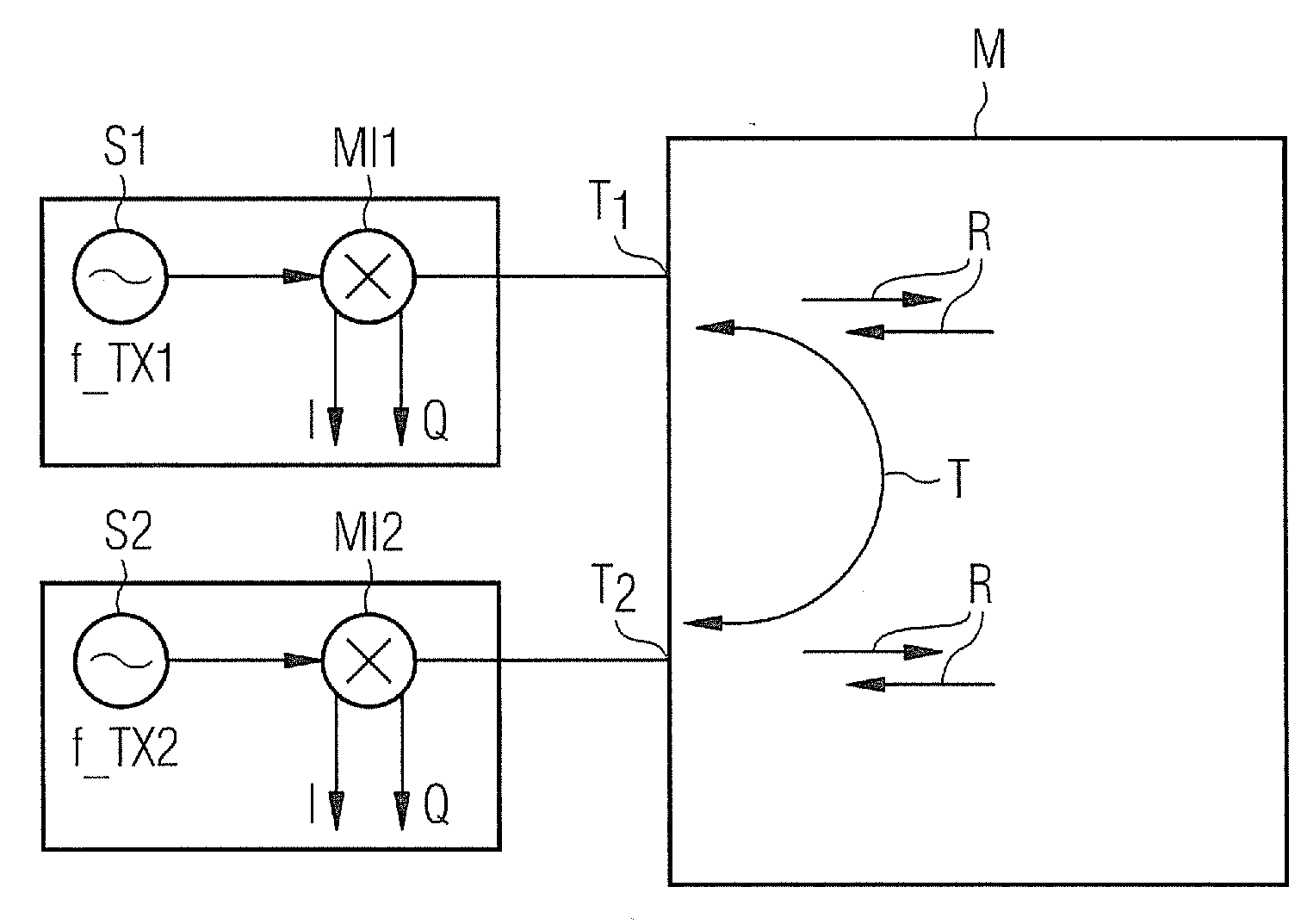Network analyzer with an n-port network having at least two ports for measuring the wave parameters of a measurement object
a network analyzer and wave parameter technology, applied in frequency analysis, resistance/reactance/impedence, instruments, etc., can solve the problem that the type of measurement of dynamic measurement objects is not possible with conventional network analyzers
- Summary
- Abstract
- Description
- Claims
- Application Information
AI Technical Summary
Benefits of technology
Problems solved by technology
Method used
Image
Examples
Embodiment Construction
[0021]FIG. 1 shows a schematic representation of a network analyzer with a conventional n-port circuit. The analyzer includes a radio-frequency signal source S, which emits a radio-frequency signal with the frequency f_TX. This signal is fed via a switch SW to one of two signal branches in each case, each signal branch representing a port T1 or T2, which is formed by means of the passage of the respective signal branch to a measurement object M. In this respect, the measurement object M can be regarded as an object with unknown properties in the nature of a black box and is therefore indicated in the form of a rectangle. Now the aim of the measurement carried out with the aid of the network analyzer is to ascertain the wave parameters of the measurement object M via the ports T1 or T2. These wave parameters, which are also referred to as s-parameters or scattering parameters, indicate how much of the power fed in to a port is reflected or transferred from the one port to the other p...
PUM
 Login to View More
Login to View More Abstract
Description
Claims
Application Information
 Login to View More
Login to View More - R&D
- Intellectual Property
- Life Sciences
- Materials
- Tech Scout
- Unparalleled Data Quality
- Higher Quality Content
- 60% Fewer Hallucinations
Browse by: Latest US Patents, China's latest patents, Technical Efficacy Thesaurus, Application Domain, Technology Topic, Popular Technical Reports.
© 2025 PatSnap. All rights reserved.Legal|Privacy policy|Modern Slavery Act Transparency Statement|Sitemap|About US| Contact US: help@patsnap.com



